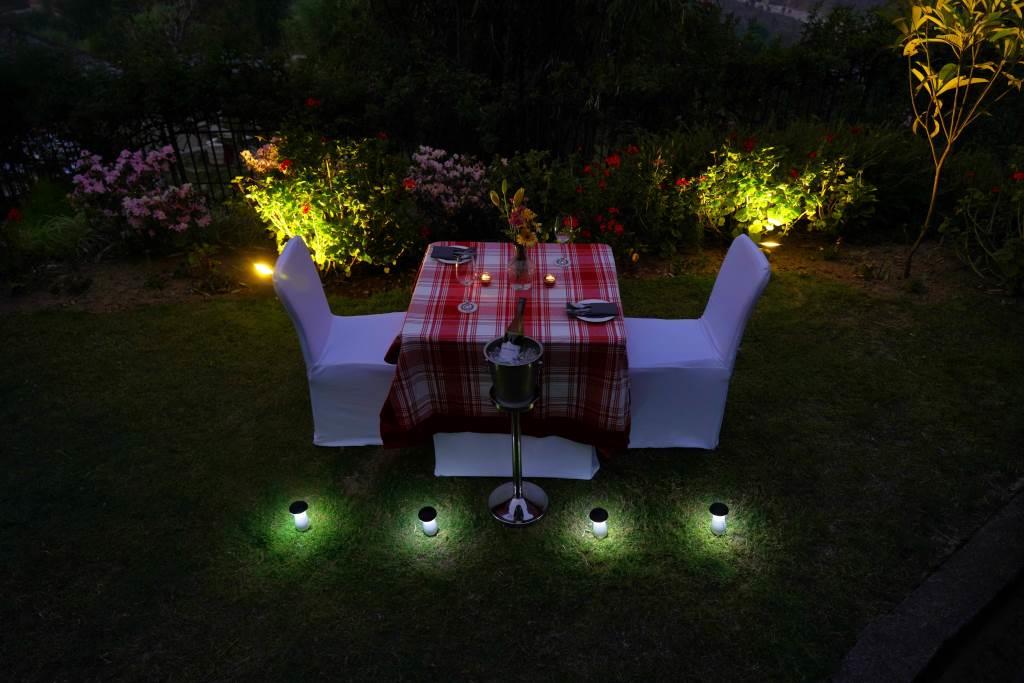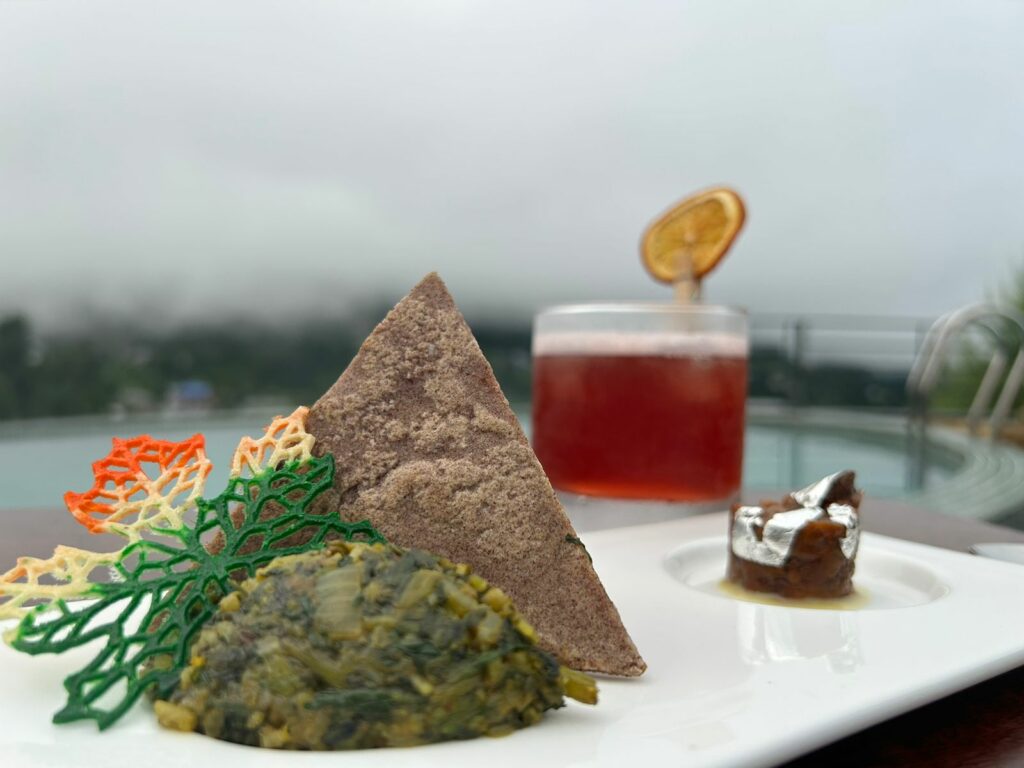Araiya Palampur Sharing Insights on Tableware and Glassware: The Unsung Heroes of an Exquisite Dining Experience!
In Conversation with Chef Arun Kumar,Executive Chef, Araiya Palampur In the world of culinary excellence, tableware and glassware are often the unsung heroes that elevate dining experiences to extraordinary heights. Beyond their functional roles, these elements are

In Conversation with Chef Arun Kumar,Executive Chef, Araiya Palampur
In the world of culinary excellence, tableware and glassware are often the unsung heroes that elevate dining experiences to extraordinary heights. Beyond their functional roles, these elements are pivotal in shaping the ambiance and sophistication of any dining affair. Tableware, meticulously selected to complement the cuisine, serves as a canvas for culinary artistry. Whether it’s the elegance of fine China enhancing a gourmet presentation or the simplicity of artisanal pottery adding rustic charm to a table experience, each piece plays a vital role in the visual appeal of a meal. Similarly, glassware is designed not only for practicality but also to enhance the sensory enjoyment of beverages. From crystal-clear wine glasses that accentuate the bouquet and flavors of wines to sleek tumblers that elevate the sipping experience of cocktails, the right glassware adds a touch of refinement and pleasure to every sip. Together, tableware and glassware form the backdrop against which culinary creations shine. Their understated elegance and functionality ensure that every dining occasion, whether a casual gathering or a lavish banquet, is infused with a sense of occasion and delight.
-The significance of tableware and glassware in enhancing the dining experience?
Tableware and glassware play significant roles in enhancing the dining experience in multiple ways:
- Aesthetic Appeal: The visual presentation of food and drinks is crucial in dining. Well-chosen tableware such as plates, bowls, and serving platters can complement the colours and textures of food, making dishes more appetizing and appealing.
- Setting the Ambiance: The style and design of tableware contribute to the overall ambiance of a dining setting. Whether it’s fine China for a formal dinner, rustic pottery for a cozy brunch, or minimalist designs for modern aesthetics, tableware sets the tone and atmosphere of the meal.
- Enhancing Sensory Enjoyment: Glassware is specifically designed to enhance the sensory experience of beverages. The shape of wine glasses, for example, can influence how aromas are perceived and how flavours are delivered to the palate. Appropriate glassware ensures that drinks are enjoyed to their fullest potential.
- Functional Utility: Beyond aesthetics, tableware and glassware serve practical purposes. They provide the right vessels for serving, eating, and drinking, ensuring convenience and ease during meals.
- Symbolism and Tradition: In many cultures, specific types of tableware and glassware carry symbolic meanings or are used in traditional ceremonies and rituals, adding layers of cultural significance to dining experiences.
- Personalization and Expression: Tableware and glassware choices can reflect personal taste and style preferences, allowing hosts and diners to express their individuality and create memorable dining settings.
Tableware and glassware are more than just utensils; they are integral components that contribute to the overall enjoyment, aesthetics, and cultural significance of dining experiences around the world.


Before choosing the ideal table setting for glassware, what key elements should be considered?
Choosing the ideal table setting for glassware involves considering several key elements to ensure both functionality and aesthetic appeal:
- Occasion and Meal Type: Consider the type of occasion and meal you are hosting. Formal dinners may require different glassware compared to casual gatherings or outdoor events. Match the formality of the glassware to the occasion.
- Beverage Type: Different beverages require specific glass shapes to enhance their flavors and aromas. Wine glasses, for example, come in various shapes for red wine, white wine, and champagne. Similarly, cocktails have specific glassware like highball glasses, martini glasses, or old-fashioned glasses.
- Glass Quality and Material: Choose glassware that is appropriate for the setting. Fine dining often calls for crystal glassware, which enhances the visual appeal and may affect the taste of wines positively. For everyday use, durable and dishwasher-safe glassware may be more practical.
- Size and Capacity: Consider the size and capacity of the glasses based on the beverages you typically serve. Ensure that the glasses can comfortably hold the amount of liquid intended without appearing too empty or too full.
- Design and Style: The design of the glassware should complement the overall table setting and decor. Coordinate the style of the glasses with the theme or color scheme of your dining area or event to create a cohesive look.
- Ergonomics and Handling: Check the ergonomics of the glassware, particularly if you expect guests to hold the glasses for extended periods. Comfortable stems or grips can enhance the dining experience.
- Practical Considerations: Think about practical aspects such as ease of cleaning and storage. Dishwasher-safe glassware or stackable designs can save time and effort during cleanup.
- Budget: Finally, consider your budget constraints. Quality glassware can vary significantly in price, so balance your preferences with what is feasible within your budget.
By taking these key elements into account before choosing your ideal table setting for glassware, you can ensure that your dining experiences are both functional and visually appealing, enhancing the enjoyment of meals and beverages for yourself and your guests.


Could you please shed some light on the latest innovations within the glassware and tableware industry?
Certainly! The glassware and tableware industry has seen several innovations in recent years. Here are some of the latest innovations to my understanding:
- Material Innovations:
Advanced Glass Materials: Manufacturers are exploring new materials that offer enhanced durability, clarity, and eco-friendliness. Borosilicate glass, for example, is known for its resistance to thermal shock and is increasingly used in both kitchenware and drinkware. - Design and Aesthetics:
Elegant and Minimalist Designs: There is a growing trend towards minimalist designs that emphasize simplicity and elegance. Clean lines, sleek shapes, and understated decorations are favoured for modern tableware and glassware.
Customizable Options: Some companies are offering customizable tableware and glassware where customers can choose colours, and patterns, or even have personalized engravings, catering to individual tastes and preferences. - Functionality:
Multi-functional Pieces: Tableware and glassware that serve multiple purposes are becoming popular. For example, bowls that can be used for serving or as storage containers, or glasses that are suitable for both wine and cocktails.
Stackable and Space-Saving Designs: Innovations include stackable glassware and tableware that optimize storage space, ideal for both homes and commercial establishments. - Technological Integration:
Smart Glassware: There are developments in smart glassware that can monitor beverage consumption, and temperature, or even suggest food pairings based on the drink being served. These innovations aim to enhance the dining experience through technology. - Sustainability:
Recycled Materials: Many manufacturers are focusing on sustainability by using recycled glass and other eco-friendly materials in their production processes.
Biodegradable Options: Biodegradable tableware made from materials like bamboo or palm leaves is gaining popularity as environmentally friendly alternatives. - Artisanal and Craftsmanship:
Artisanal Craftsmanship: There is a renewed appreciation for handcrafted tableware and glassware created by skilled artisans. These pieces often showcase unique designs and textures that add character to dining experiences. - Integration of Cultural Influences:
Global Influences: Designs inspired by various cultural traditions and global cuisines are becoming more prevalent, offering a diverse range of choices for consumers seeking unique and culturally rich tableware and glassware.
These innovations reflect a growing demand for both functional excellence and aesthetic appeal in tableware and glassware, catering to a wide range of consumer preferences from practicality to luxury and sustainability.
—-
 English
English French
French German
German Italian
Italian




